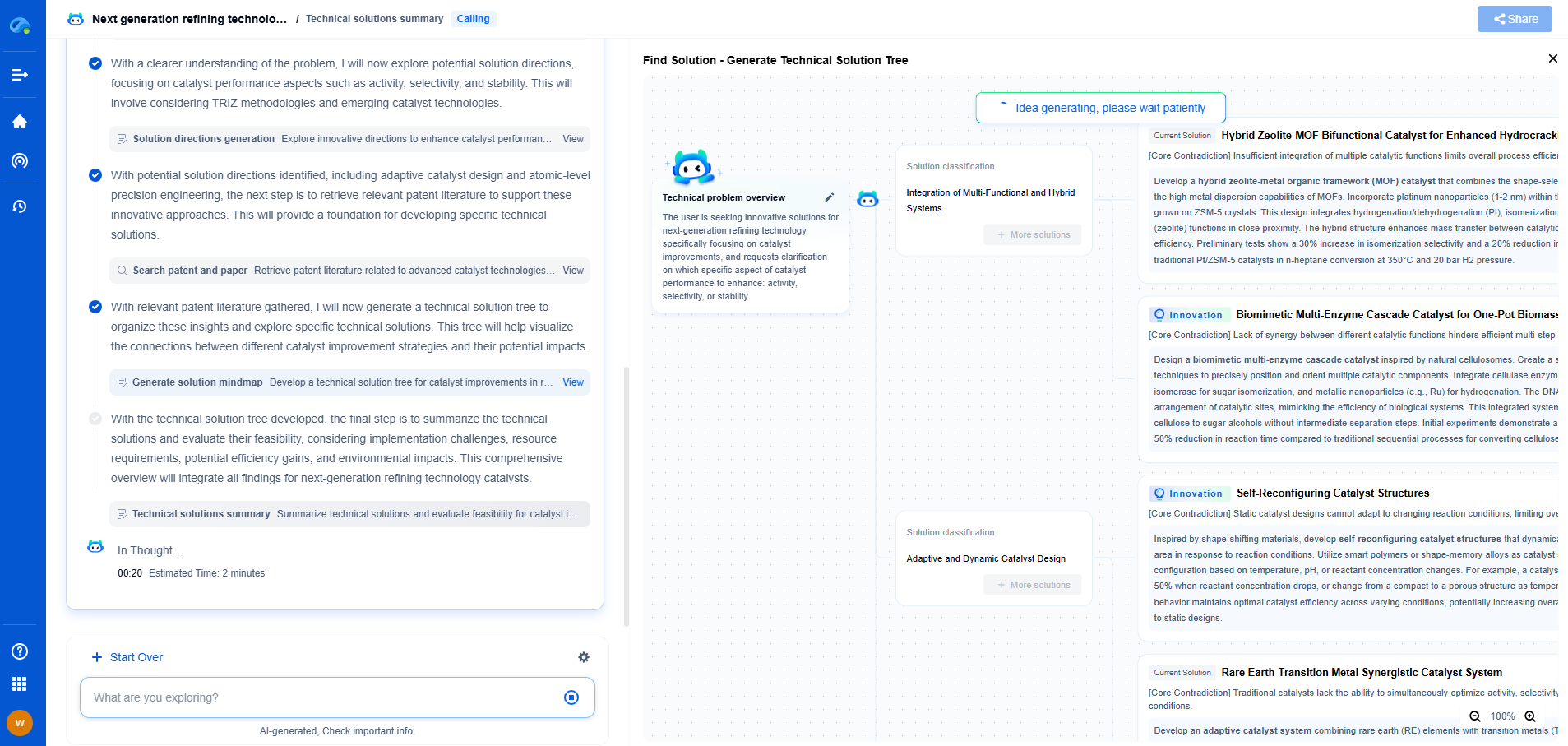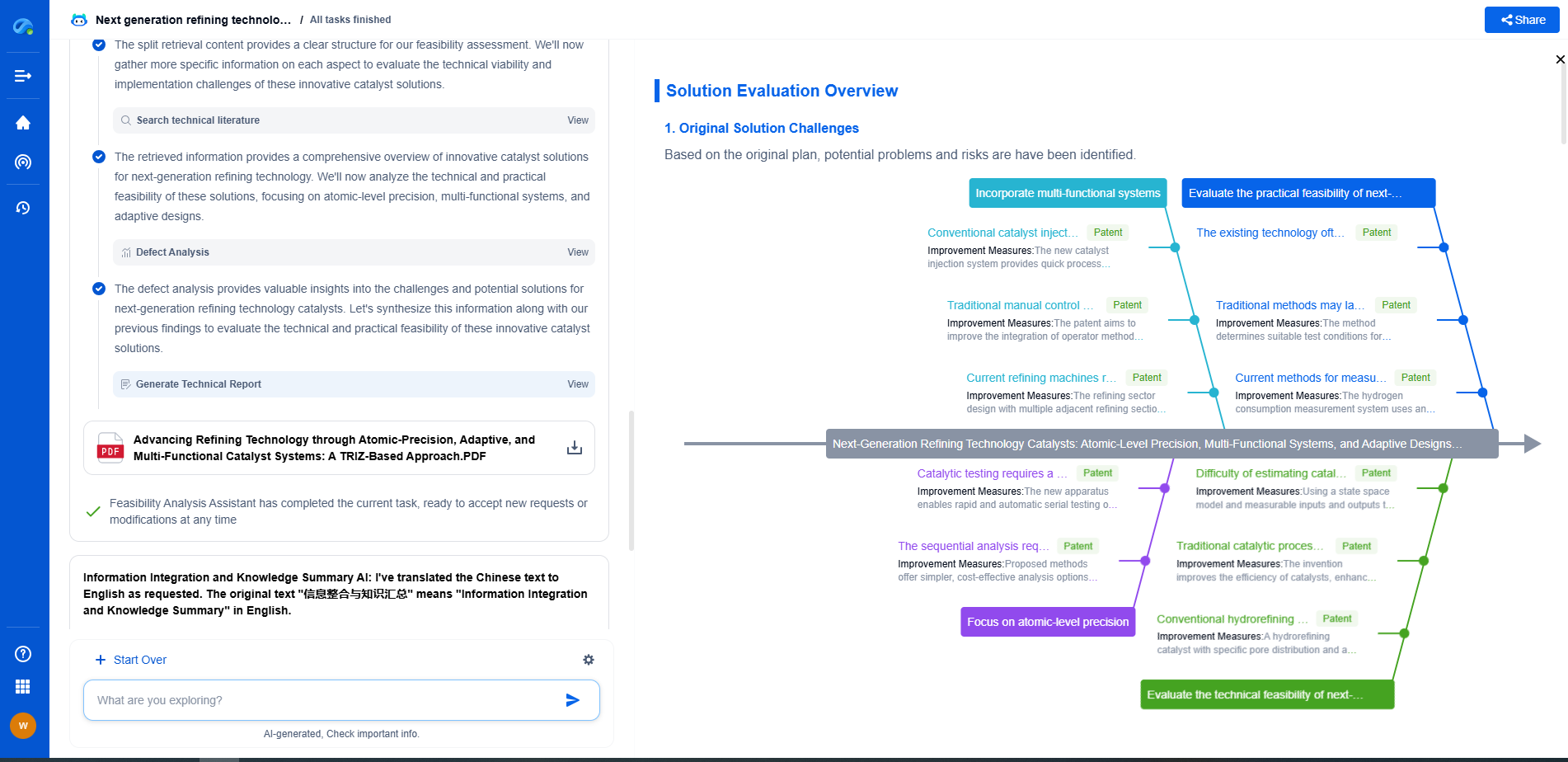ASTM C423 vs. ISO 354: Which Standard to Use for Acoustic Panels?
JUL 16, 2025 |
When it comes to measuring the sound absorption of acoustic panels, two standards stand out: ASTM C423 and ISO 354. These standards provide methods for evaluating how well a material can absorb sound, which is crucial in environments where controlling noise levels is important, such as recording studios, auditoriums, and open-plan offices. Understanding the differences between these two standards can help you determine which is more appropriate for your specific needs.
Understanding ASTM C423
The ASTM C423 standard, developed by the American Society for Testing and Materials, is a predominant standard used in the United States. This standard measures the sound absorption of materials using a reverberation room method. Essentially, the material is placed in a room, and sound is introduced to determine how much of it is absorbed by the material versus how much is reflected. The resulting data is used to calculate the Noise Reduction Coefficient (NRC), which is a single-number rating that indicates the ability of a material to absorb sound.
ASTM C423 is particularly valued for its comprehensive approach, allowing testers to evaluate a material over a range of frequencies, typically from 125 Hz to 4000 Hz. This frequency range covers many of the sounds encountered in everyday environments, making the data particularly relevant for practical applications.
Exploring ISO 354
ISO 354 is an international standard set by the International Organization for Standardization. Like ASTM C423, it employs a reverberation room method to determine the sound absorption properties of a material. However, there are some differences in the specifics of the testing procedures and the way results are reported.
The ISO 354 standard provides data that are used to calculate the Sound Absorption Average (SAA) or the weighted sound absorption coefficient (αw) instead of the NRC. This standard is widely used outside the United States and is particularly favored in Europe and other regions that follow ISO standards.
Key Differences Between ASTM C423 and ISO 354
While both standards aim to provide a measure of a material's sound absorption properties, there are a few key differences:
1. Frequency Range and Data Reporting: Both standards cover similar frequency ranges, but the way in which data is synthesized and reported differs. ASTM C423 focuses on the NRC, providing a single number that is easy to interpret, whereas ISO 354 offers a more detailed view with the αw.
2. Testing Environment: There are subtle differences in the specifications of the testing environment, such as the size and shape of the reverberation room, which can lead to variations in results between the two standards.
3. Regional Preference: ASTM C423 is primarily used in the United States, while ISO 354 is more commonly employed internationally. Depending on your location and the market you are serving, one standard may be more recognized than the other.
Choosing the Right Standard for Your Needs
Deciding which standard to use depends on several factors:
1. Geographic Relevance: If your work is mainly in North America, ASTM C423 might be the more appropriate choice. Conversely, if you are operating in Europe or other global markets, ISO 354 could be more relevant.
2. Type of Project: Consider the specific needs of your project. If you require detailed frequency-specific data, ISO 354 might offer more comprehensive insights. If a general overview is sufficient, ASTM C423 provides a straightforward NRC rating.
3. Industry Norms: Different industries might have established preferences for one standard over the other. Consult industry guidelines and standards to ensure compatibility with existing practices.
Conclusion
Both ASTM C423 and ISO 354 offer valuable insights into the sound absorption properties of acoustic panels. Understanding the differences between these standards can help you choose the one that best fits your project requirements and geographic context. Whether you prioritize the simplicity of the NRC or the detailed insights of the αw, selecting the right standard is crucial for achieving optimal acoustic performance in your space.
In the world of vibration damping, structural health monitoring, and acoustic noise suppression, staying ahead requires more than intuition—it demands constant awareness of material innovations, sensor architectures, and IP trends across mechanical, automotive, aerospace, and building acoustics.
Patsnap Eureka, our intelligent AI assistant built for R&D professionals in high-tech sectors, empowers you with real-time expert-level analysis, technology roadmap exploration, and strategic mapping of core patents—all within a seamless, user-friendly interface.
⚙️ Bring Eureka into your vibration intelligence workflow—and reduce guesswork in your R&D pipeline. Start your free experience today.
- R&D
- Intellectual Property
- Life Sciences
- Materials
- Tech Scout
- Unparalleled Data Quality
- Higher Quality Content
- 60% Fewer Hallucinations
Browse by: Latest US Patents, China's latest patents, Technical Efficacy Thesaurus, Application Domain, Technology Topic, Popular Technical Reports.
© 2025 PatSnap. All rights reserved.Legal|Privacy policy|Modern Slavery Act Transparency Statement|Sitemap|About US| Contact US: help@patsnap.com

